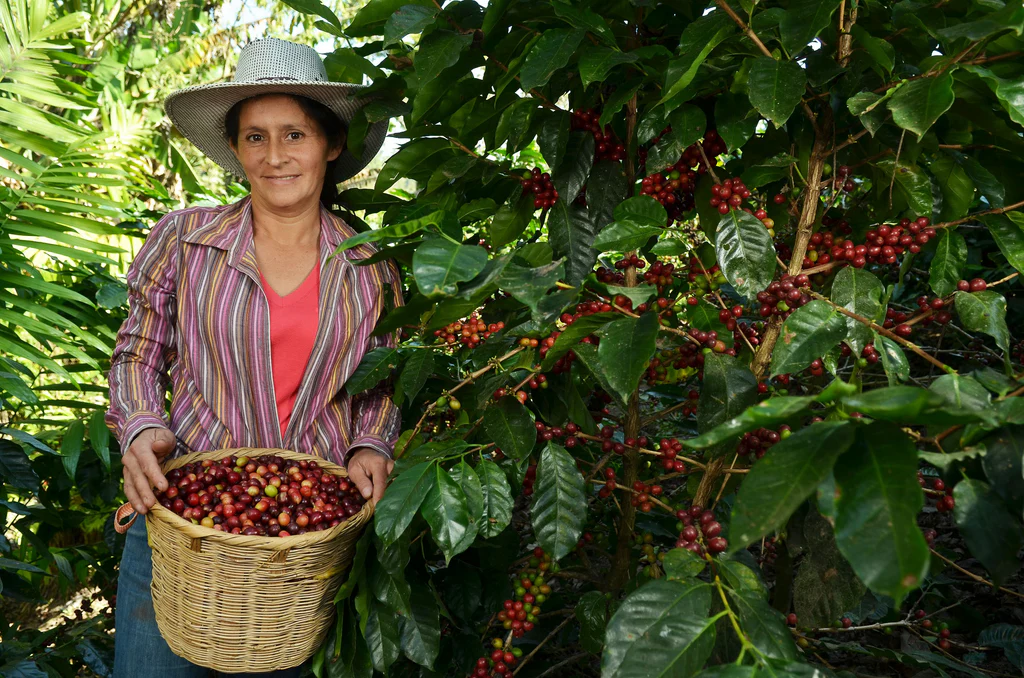
Behind the Coffe Beans: The Journey From Farm to Cup
Le Stanze Bistrot Cafe – Most people enjoy coffee without thinking about its past. They smell the warm aroma, hold the cup, and take a sip. Yet, there is an entire world before that moment begins. Coffe Beans starts far away, in quiet mountain farms and tropical forests. It grows in rich soil, under soft rain and bright sun. Because of this long journey, understanding the story behind coffee beans changes how we taste each cup.
Every cup connects nature, culture, and human effort. Farmers rise before sunrise, roasters listen for crackling beans, and baristas adjust every pour. Coffe Beans Meanwhile, people in cafés or homes lift a cup and feel comfort. For many, coffee is a habit. For others, it is a passion. However, when we learn what truly happens behind the scenes, coffee becomes a deeper experience.
Today, this topic matters more than ever. Coffee culture keeps expanding. In addition, more people care about farming, traceability, and sustainability. Because of this, learning about coffee beans offers value that lasts. It is evergreen, educational, and relevant to anyone who loves flavor and craft.
Read more :The Eminem Show Hits 19× Platinum Status in Australia
Coffee has an ancient story. According to legend, a goat herder named Kaldi discovered its energizing power in Ethiopia. Over time, coffee traveled through the Middle East, Europe, and eventually the entire world. As cafés opened across cities, they became places for learning, friendship, and creativity. As a result, coffee became part of daily life for millions of people.
Through centuries, coffee beans shaped rituals, café culture, and even trade routes. This history shows that coffee is not only a drink. It is a symbol of connection and community.
Coffee grows in special climates. It requires high mountains, volcanic soil, steady rain, and cool nights. Countries like Ethiopia, Colombia, Brazil, Indonesia, and Kenya are known for producing high-quality coffee beans. Each region gives unique flavors because the environment shapes taste.
Farmers monitor trees, soil, and weather daily. They protect shade, preserve biodiversity, and watch for pests. Although many crops use machines today, coffee remains personal. It is grown with patience and knowledge passed through generations. In simple terms, farming coffee is a balance of nature and care.
Ripe coffee cherries must be picked carefully. Unlike large industrial crops, many specialty producers harvest by hand. Workers choose only red, mature cherries. As a result, coffee beans have better sweetness and balance. This step takes time and effort, but it affects flavor more than most people realize.
Imagine spending hours under the sun selecting fruit one by one. It is slow, but it shows dedication. Therefore, every cup of specialty coffee honors the people who made careful choices.
Once picked, cherries are processed. This step decides how coffee beans will taste. The main methods include:
Washed (clean, bright flavor)
Natural (fruity, sweet, rich body)
Honey (smooth, balanced, slightly sweet)
Fermentation styles (unique, complex flavors)
Each method mixes science and traditional knowledge. For example, washed coffee uses water to remove the skin. Meanwhile, natural coffee dries with the fruit still attached. As a result, every method creates a different taste profile.
After processing, beans dry in the sun. Workers move them constantly to avoid mold and uneven drying. This stage takes discipline. Coffe Beans In addition, some producers rest beans for weeks to stabilize flavor. Even though this step is quiet and slow, it is essential. Without proper drying, coffee beans lose quality quickly.
Before shipping, beans are sorted to remove defects and impurities. Sorting can be done with machines and by hand. High-quality coffee requires strict checks. Therefore, only clean, even-sized beans are exported to roasters across the globe.
Consumers increasingly ask for transparency. Coffe Beans Many people now want to know where coffee beans were grown and who harvested them. Because of this trend, ethical sourcing and traceability continue to rise.
Roasting turns green beans into fragrant brown coffee. Heat triggers chemical reactions that create aroma and flavor. Light roasts taste bright and fruity. Medium roasts feel balanced and sweet. Dark roasts taste bold and strong. Roasters study moisture, density, and timing. In addition, they listen for “first crack” to guide temperature.
Roasting mixes art and technique. However, mistakes in seconds can change everything. When coffee beans pop and release aroma, it feels like watching flavor come alive.
At the final stage, we brew coffee at home or in cafés. Water temperature, grind size, and brew time matter. Popular methods include:
Espresso
Pour-over
French Press
AeroPress
Cold brew
Baristas adjust each step to extract balanced flavor. Home brewers practice too, learning small adjustments each day. Therefore, brewing becomes both ritual and discovery. Ultimately, coffee beans reveal their story only when water meets grounds.
Climate change threatens coffee farms. Rising temperatures, changing rainfall, and pests challenge farmers. Because of this, sustainable practices are essential. Shade-grown coffee, organic farming, fair pay, and direct trade help protect the future of coffee beans. When consumers choose ethical coffee, they support farmers and the earth.
Coffee is a global craft, not just a drink
Farmers are central to flavor and quality
Hand-picking improves ripeness and taste
Processing style shapes aroma and sweetness
Roasting combines science and creativity
Brewing transforms effort into taste
Sustainability protects future crops
Traceability builds fairness and trust
Every cup tells a human story
Appreciation makes each sip meaningful
When we know the journey of coffee beans, drinking coffee becomes richer. Instead of rushing through a morning cup, we pause. We taste. We remember hands in fields, sounds in roasteries, and water meeting grounds. Coffee becomes gratitude instead of habit. As long as people continue to appreciate its roots, coffee will remain a treasure — not only a drink, but a story worth sharing each day.